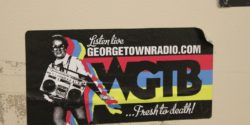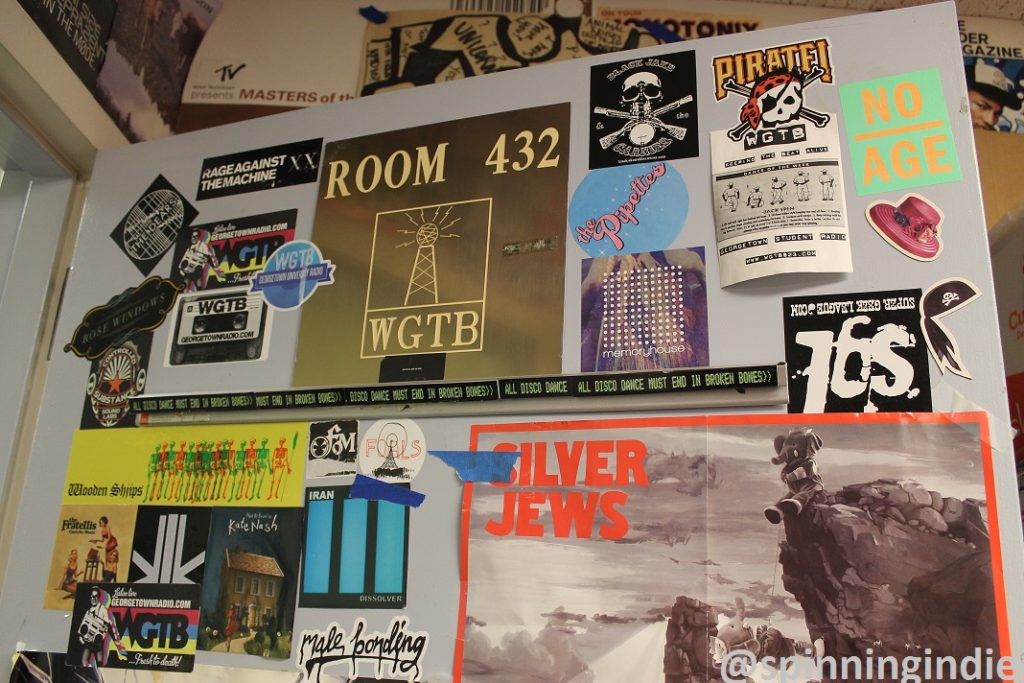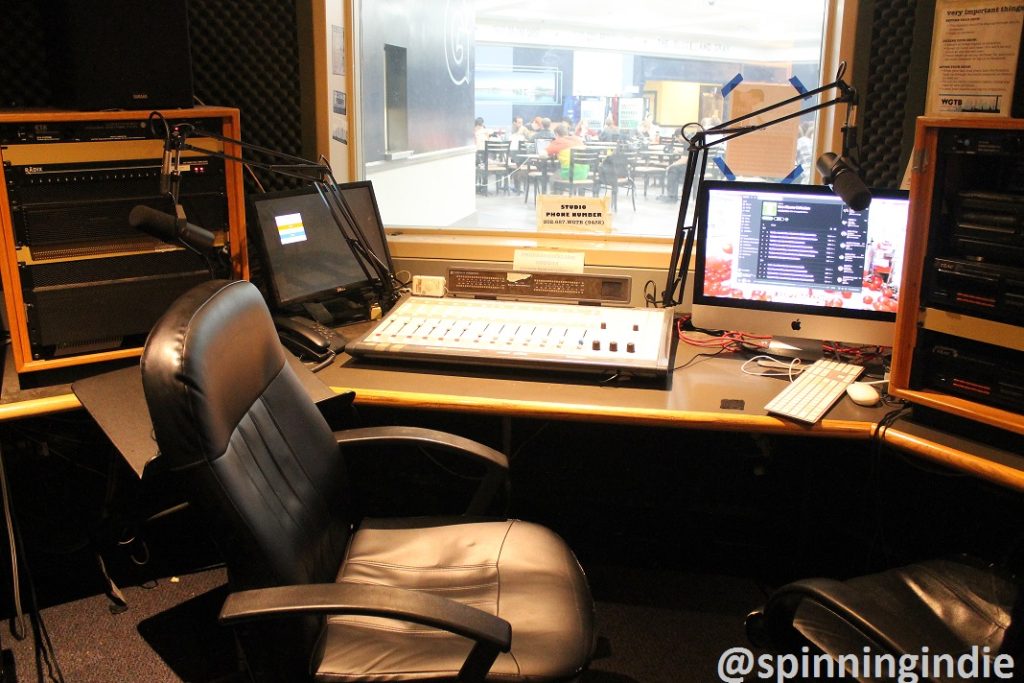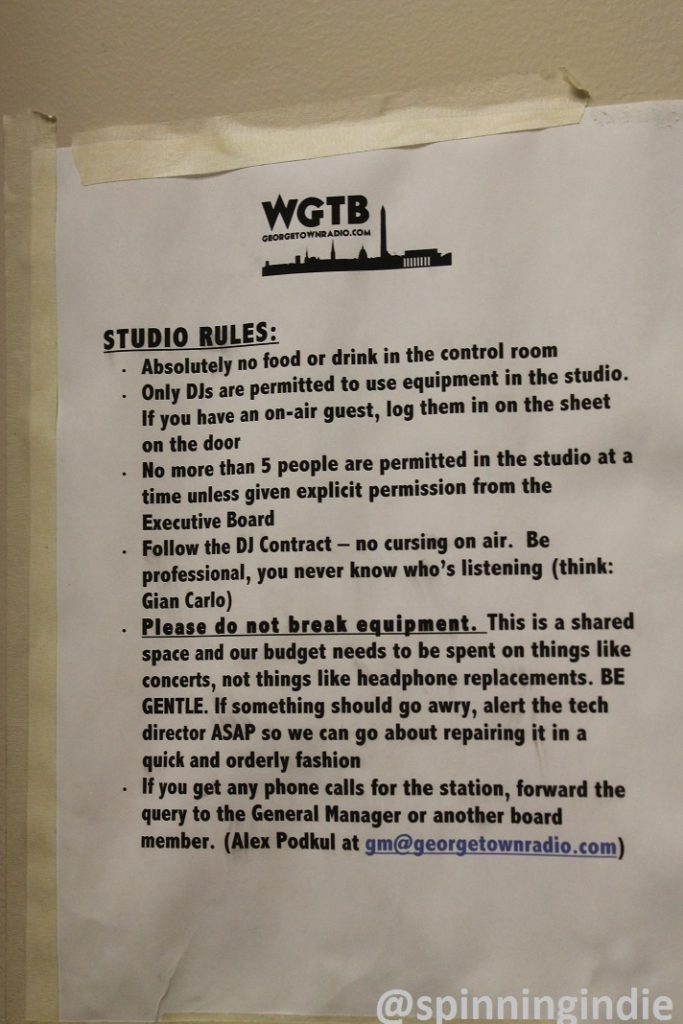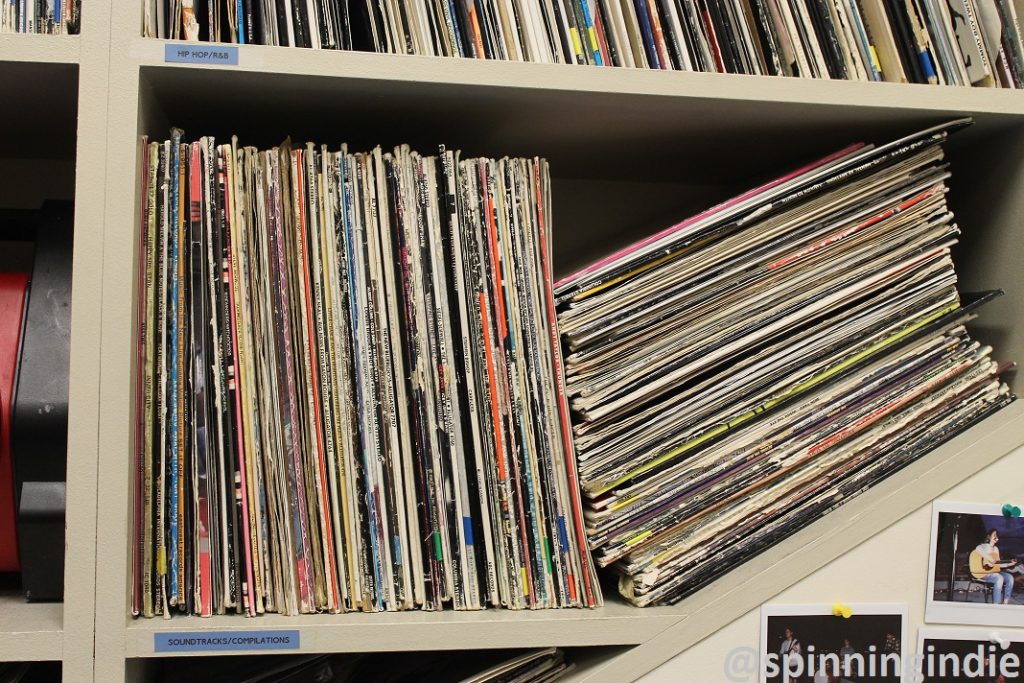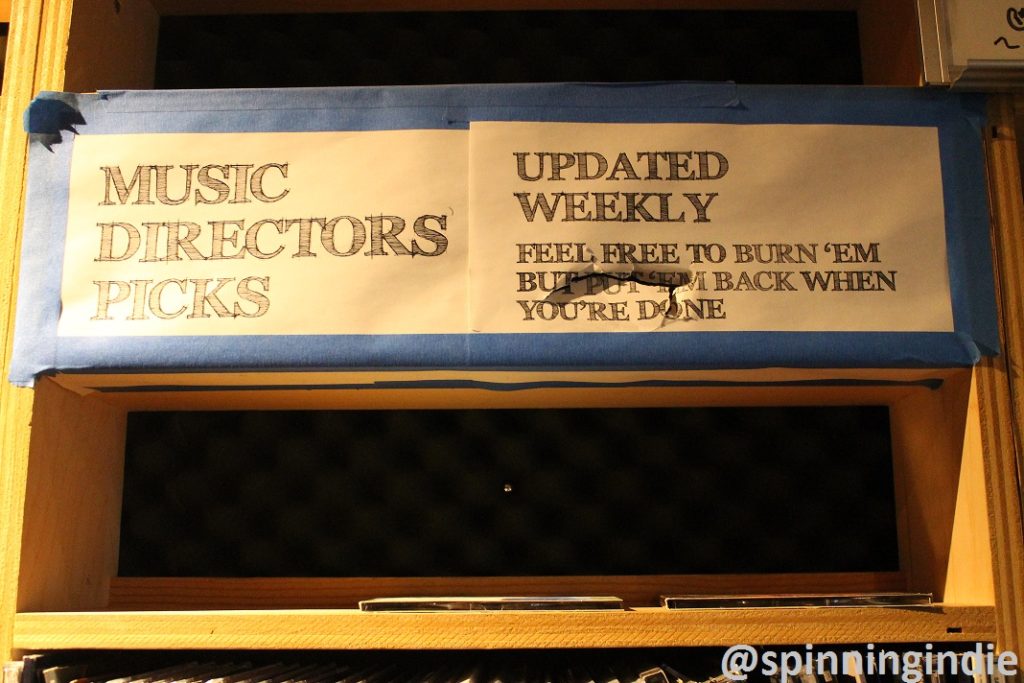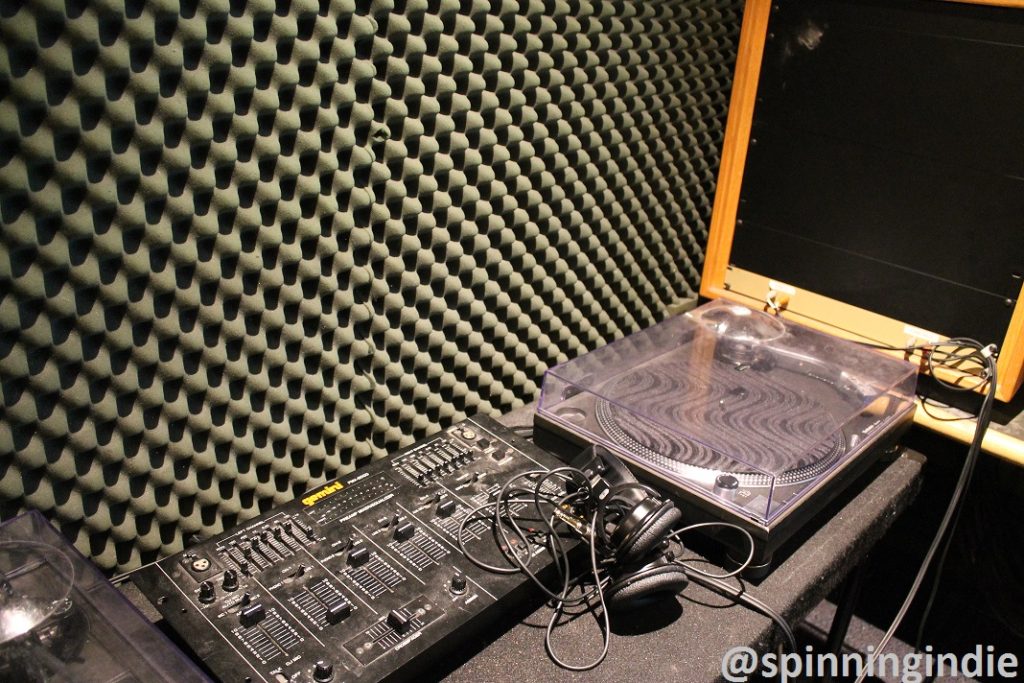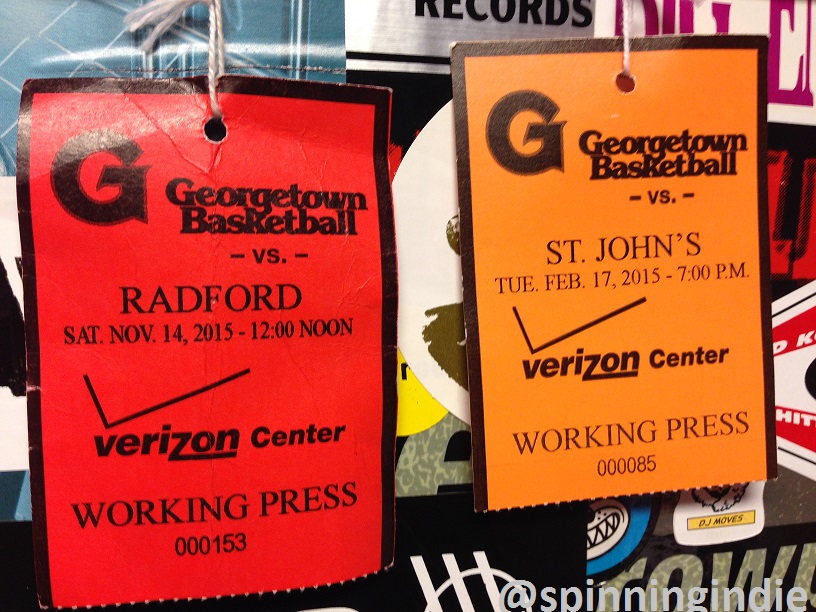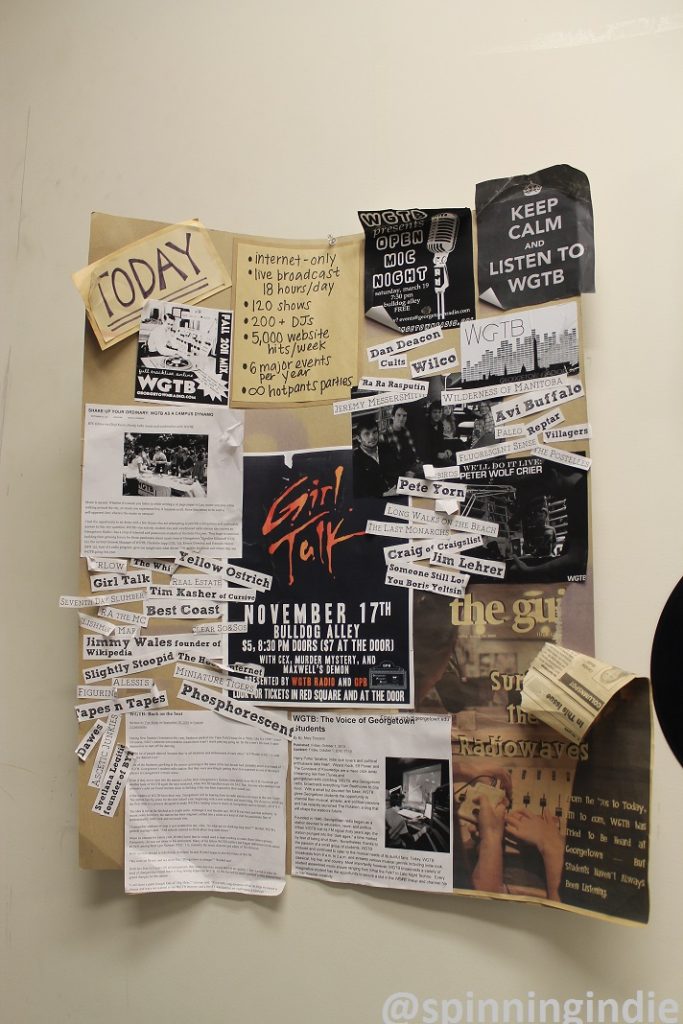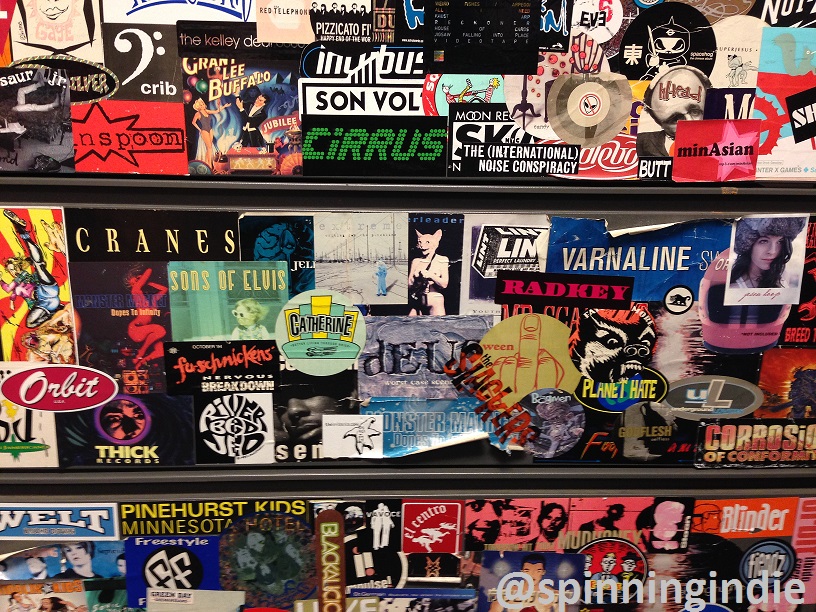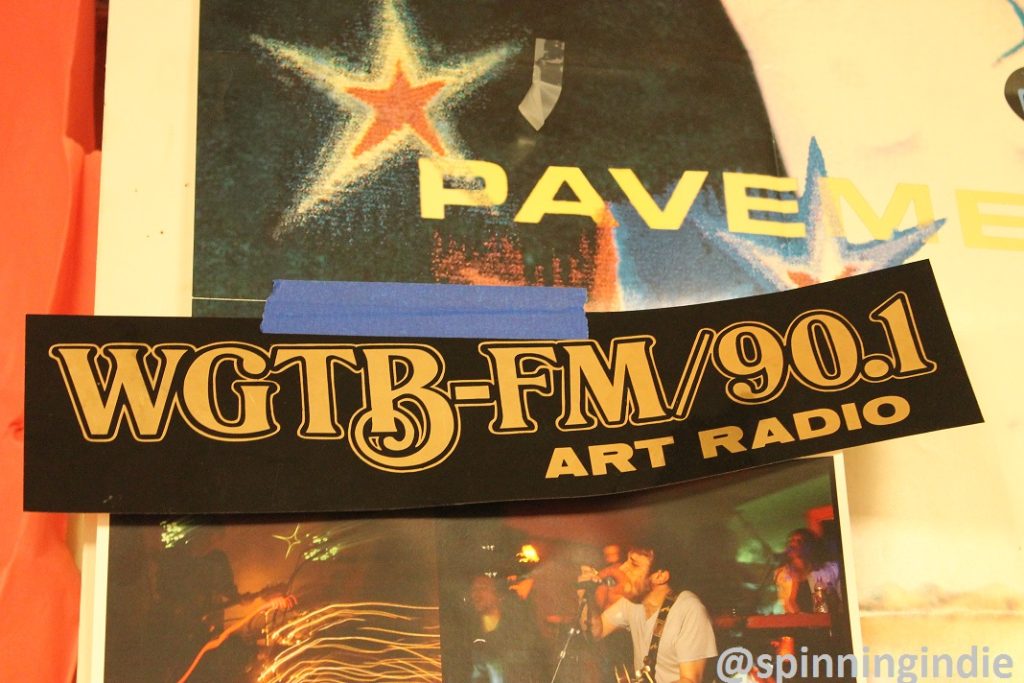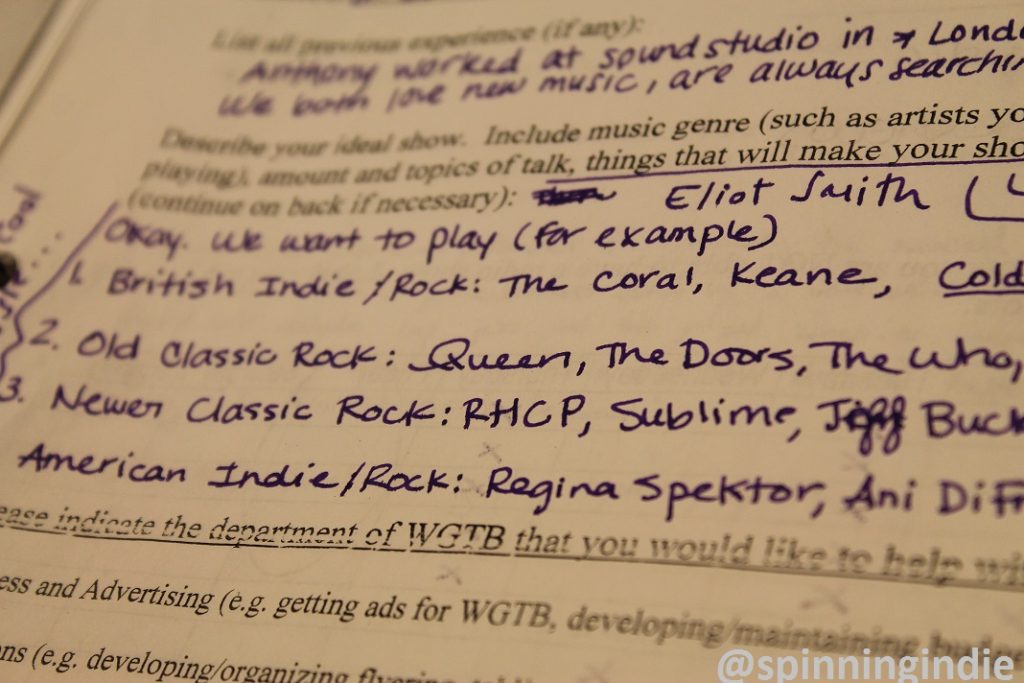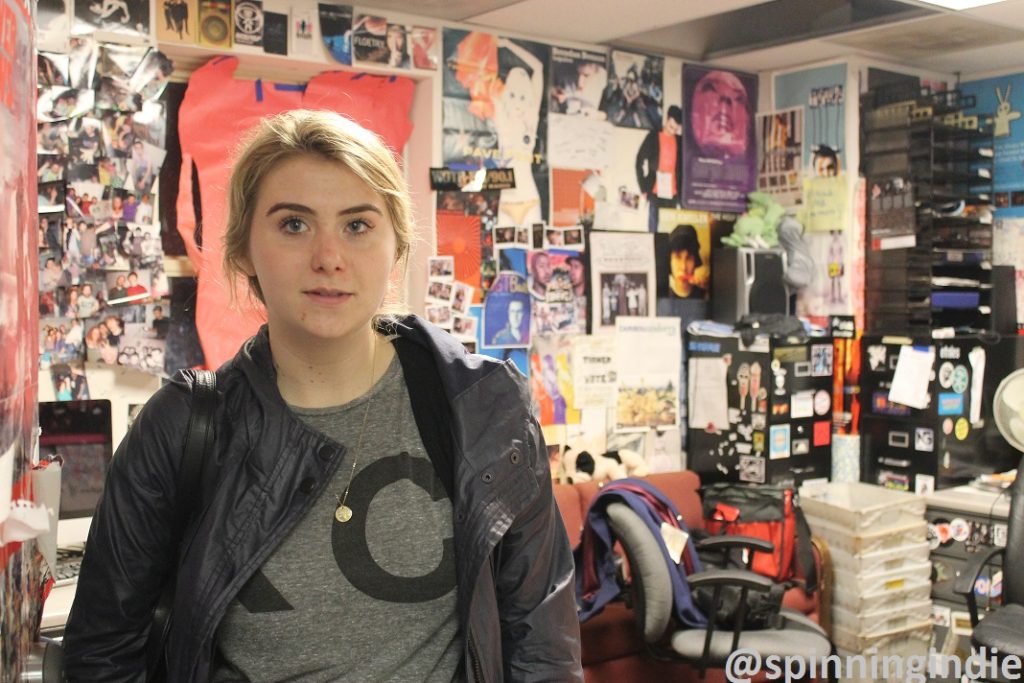After visiting WCUA at Catholic University in Washington, D.C. on February 24, I made my way to Georgetown in order to check out college radio station WGTB at Georgetown University. Since it’s a bit more difficult to get to via the Metro system, I opted for a long walk to campus, with a break mid-way through for lunch. All day the skies were threatening and rain started in earnest just as I was arriving on campus. It was a welcome relief to duck inside to see WGTB.
WGTB General Manager Adrienne Taylor met up with me in Georgetown’s student center building (The Leavey Center) and walked me over to the WGTB studio. Down the hall from eateries and a coffee shop and adjacent to a performance space (Bull Dog Alley), the station feels tucked away, yet also close to a hub of campus activities, particularly since the studio has a window overlooking Hoya Court, a food court in the Leavey Center.
The door to the WGTB space opens up into a lobby-like room that also functions as an office and record library. Old LPs are glued to the walls and there are also vintage and contemporary station flyers, stickers, photos and modern-day scribbles on the walls. A few other WGTB staffers were hanging around and they told me that some people call it the “womb room” and that it also gets used as a green room for the nearby performance space. The records (both LPs and CDs) aren’t well organized, so DJs interested in playing the material have to dig in to investigate what’s there.
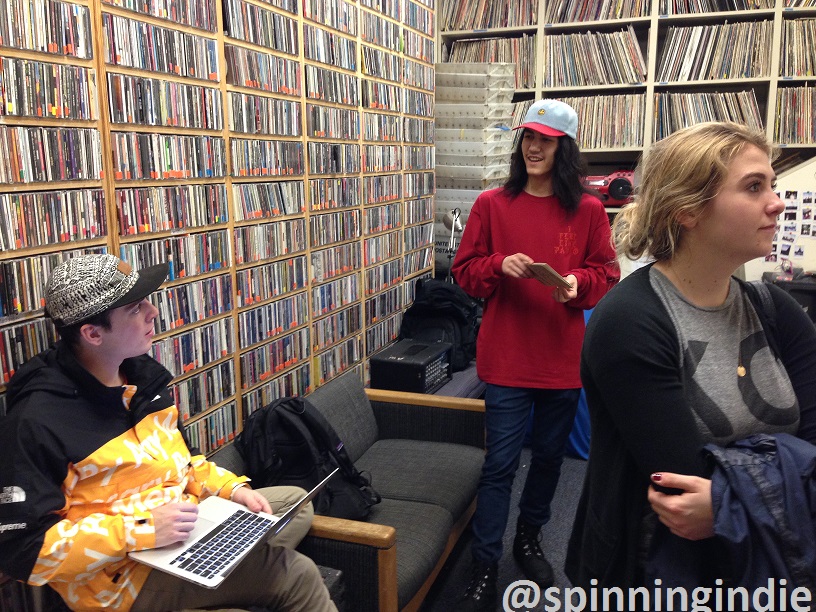
WGTB staff (Left to right: Program Director Tom Garzillo, Promotions Director Paul Henderson and General Manager Adrienne Taylor) in record library/lobby. Photo: J. Waits
From that room, a door opens up into the on-air studio and another door leads to a storage closet. Engineers were busy cleaning up the studio mixing board, which had just died after a DJ had spilled soda on it during a show five days before my visit. The station had been operational since then, but not everything was working. Taylor told me that the entire incident could be heard in the show archive, which made it all the more painful. That scenario is pretty much every station manager’s worst nightmare and I was happy to see that the board was functional by the end of my visit.
The station had around 63 programs with approximately 123 DJs during spring semester. Forty other shows were on a waiting list, hoping to get approval. Shows are typically two hour long and are scheduled from 8am to 2am every day of the week. Taylor told me that this was a recent change and that programs used to be 1-hour long, with a DJ roster of more than 150. This proved to be challenging administratively, so the station opted for fewer shows. This in turn has led to higher quality programs. Part of that may also have to do with the station’s policy of twice yearly anonymous show reviews, according to Program Director Tom Garzillo.
In addition to the on-air DJs, 40 writers work on the station’s blog, The Rotation. WGTB handles music submissions a bit differently and its blog editors filter through music sent to the station (typically via CDs and flash drives). Taylor said they get maybe a mail tub’s worth of music every week.
Most DJs at WGTB are using online sources for the music that they play on-air, although a few shows play all vinyl. Promotions Director Paul Henderson said that a lot of shows actually have a vinyl component and that there are DJs who play vinyl and CDs in addition to digital music. As far as content, many of the shows play alternative/indie music and electronic music. There’s also a classical music show as well as some talk programming (including a D.C. talk show), a cooking-themed show, and sports shows.
Sports plays a major role at the station and twelve students at WGTB are focused entirely on sports programming, running a separate sports stream that airs all of the Georgetown (Hoya) sports games. Taylor said that it was a big deal for the station to cover NCAA men’s basketball games at the Verizon Center during this school year.
A streaming radio station today, WGTB has a rich history dating back to the early 1940s. According to Taylor, a Catholic priest started the station “to broadcast Latin mass to shut-ins.” That first station, known as Georgetown Broadcasting System, launched in 1941 and operated as a campus only carrier current station before acquiring an FM channel in 1960. By the 1970s, the FM station (at 90.1) had a devoted following in D.C., with its liberal leanings, including left-wing, feminist, gay-friendly (it was home to pioneering gay talk show “Friends,” which later moved to a Pacifica station in D.C.) and anti-war programming. Also an alternative music and punk rock haven, with the slogan, “One Nation Underground,” WGTB’s license was ultimately discarded by Georgetown. The WGTB website states, “In 1979, to mark the creation of the University of the District of Columbia (UDC), Georgetown donated WGTB’s 6700 watt signal (90.1 FM) to UDC. This signal was later sold by UDC in 1997 to C-SPAN for $25 million.”
Following the loss of the FM signal, students used AM carrier current to broadcast on campus and by the mid-1990s a leaky cable method was used to transmit FM broadcasts on campus. Online streaming started in 2001. Take a look at this well-researched, short documentary to get a sense of the important role that the station has played in the community, particularly during its FM years.
Although student-run WGTB is less radical than it was during its FM days, it’s still a creative force on campus. In addition to radio shows and its blog, the station also produces numerous events for the campus and for the station community. Taylor, who was the station’s Events Director during the prior school year, said that events have been a key part of Georgetown Radio for many years. The station has hosted acts like 21 Pilots, Cults, and Best Coast and Taylor said that often there is competition with other clubs who want to put on concerts. WGTB also does smaller events, including an open mic in a nearby lounge during the week of my visit and even gatherings on dorm rooftops.
Additionally, WGTB offers live DJ services and equipment rentals and also hosts concerts as well as in-studio interviews and performances. Georgetown has no fraternities or sororities and I was told that this may be part of the reason why student clubs are so important. Taylor said that much of the Georgetown social life happens on campus or on nearby “M” Street and explained that there’s even a club called “Breaking the Bubble,” which attempts to get people to leave the “Georgetown Bubble” and see more of D.C.
According to Taylor, WGTB draws students from all over campus and she said that she’s met people who she never would have met in her classes. She explained that the radio station seems to attract “all the coolest people that we didn’t know were here” and said that it’s particularly helpful to have the radio station as a hub as the campus is “not the most hospitable place for creatives.”
After touring around the studio, Taylor took me upstairs to the WGTB office. Calling it one of her favorite parts of the station, Taylor explained that it’s where station board members work, hang out, and have meetings. The cozy space feels like a college radio haunt, with posters and promotional band photos on the walls, a couple of couches, a sticker-covered cabinet, random LPs (I spotted John Lennon and Destiny’s Child), and a hole in the ceiling. There’s also some interesting archival station materials, including phone lists from the 1980s, old DJ application forms, and a history folder. Taylor said that station alums are quite active on social media and that they have been sharing old photos and memorabilia.
As we talked, the rain storm outside intensified, with thunder crashing and lightning striking, while strong winds rattled the windows near where we were sitting. I semi-joked about tornadoes and she said she didn’t think there were tornadoes in D.C. (Taylor is from the midwest). A bit too scared to leave, luckily Taylor was happy to keep talking about college radio until the storm subsided. I learned later that there was actually a tornado watch in D.C., so I’m glad that we stayed put!
Thanks so much to Adrienne Taylor and everyone else at WGTB for a great visit. This is my 102nd station tour report (and my 71st college radio station visit). See my most recent field trips on Radio Survivor and see a full list of my station tour reports on Spinning Indie. 7/26/16 Update: Hear more about this visit on Episode #52 of the Radio Survivor Podcast.

